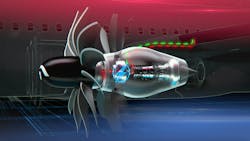NASA to start designing more sustainable jet engine core
WASHINGTON - NASA, alongside industry, will soon begin designing a new jet engine concept for the next generation of ultra-efficient airliners — officially graduating to the project’s next phase, John Gould writes for NASA. Continue reading original article.
The Military & Aerospace Electronics take:
22 May 2024 -The project, named Hybrid Thermally Efficient Core (HyTEC), aims to demonstrate this compact core and ensure the technology is ready for integration into engines powering next-generation aircraft by the 2030s. HyTEC is an essential component of NASA’s Sustainable Flight National Partnership.
To achieve this ambitious goal, HyTEC is structured in two phases. Phase 1, which is now wrapping up, focused on selecting the component technologies to be used in the core demonstrator. Phase 2, now beginning, will see researchers design, build, and test a compact core in collaboration with GE Aerospace.
Before researchers could initiate the design and construction of the core, they needed to explore innovative new materials for use in the engine. Following three years of progress, HyTEC researchers developed effective solutions.
Related: Pratt & Whitney and NASA collaboration drives 'green' engine development
Related: Raytheon Technologies completes first engine run of hybrid-electric demonstrator
Jamie Whitney, Senior Editor
Military + Aerospace Electronics
